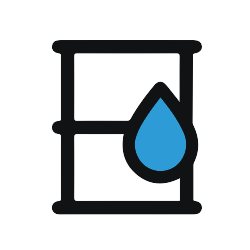Food Supplier HACCP: Glass Manufacturing Foreign Material or Defect Detection Devices Process Check
The Food Supplier HACCP: Glass Manufacturing Foreign Material or Defect Detection Devices Process Checklist mobile app allows you to replace your paper checklist with a smartphone, tablet or desktop.
5,000 Companies save time and money with GoCanvas






The mobile form includes fields to document items such as critical control point ID, process step, monitoring activity/frequency, corrective action activity, and minimum CCP verification activities. Once the mobile app is filled out a secure PDF is generated. The PDF is easy to share, and a copy is stored in your account for your food manufacturing records. You can also use the App Builder to personalize and customize this mobile form. If a detection device is not operational, stop the line or divert production to an accumulation table or to cullet (rework) until the device is operational. Place the product produced since the last time the detection device was verified to be operating on Category II hold. The equipment must be repaired prior to resuming normal production. Re-run the held product through a properly operating detection device. Product re-run through the detection device may be released to normal production. For continuous operations where glassware cannot be re-run through inspection devices, glass from the time period since the last satisfactory check must be placed on Category II hold. Glass must be 100% inspected (typically manually, with lightbox) starting at the time the equipment was noted as non-operational back through the previous X pallets (X = no less than 4 for Y number of containers) of product. If no defects are found in the X pallets of production (Y total containers), the remaining production on hold may be released. If any identified defects are found, the inspection must continue until a total of X pallets (Y containers) are inspected and are free of defects. The re-selected glass may be released to normal production. If the number of diverted glass containers are found to contain extraneous matter or defects in excess of the critical limit, determine the defective mold number and set mold number to reject device to reject all production from that specific mold. Identify the cause of the defect or extraneous from the specific mold and implement corrective action to repair the problem. If the problem with the specific mold cannot be repaired, all production from that mold must be rejected to rework (cullet) until the problem is resolved. After the investigation, product determined to be contaminated or defective shall be placed on Category I hold. Notify Designated Quality Function to determine disposition.
GoCanvas accounts come
with hundreds of form templates




Don't take our word for it...
“I’m not a tech guy and I was able to pick this thing up in probably an hour, and actually start to build apps. I’ve done them over lunch when I’ve gotten frustrated with a process that didn’t exist in our company. So for non tech people who’ve got a problem, the support here is awesome and I’d recommend it to anybody, not just in our industry.”








